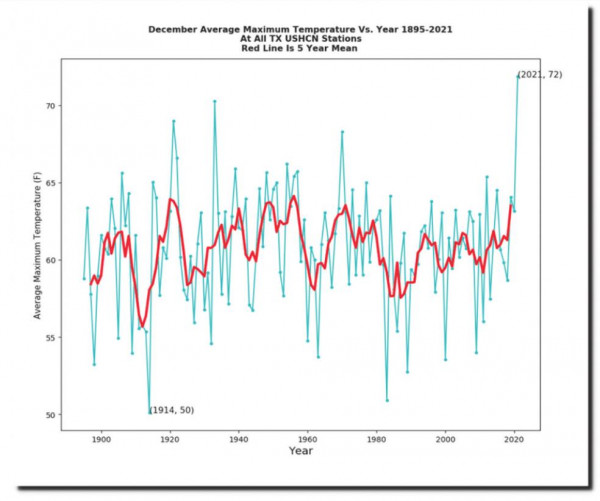The right way to present an alternative viewpoint


In last week’s issue, I wrote about the rollercoaster weather we have been experiencing ... back and forth from warm to frigid ... and mentioned about Texas having the warmest December since the 1890s.
I also mentioned the current drought, and a few thoughts on global warming. Early this week, I re
Early this week, I received an email from ‘79 IPHS graduate Travis Little. And I’m going to share it with you here.
Why? Because his comments were polite, well-articulated, and to the point. They didn’t include personal attacks, or social media-like derogatory and unwelcome comments.
In short, it is the type of back and forth two people should have with each other. It is civilized, and therefore has positive implications ... it makes you think about alternative viewpoints, without damaging a relationship.
So, here’s Travis Little’s response to my column:
Kevin,
Just wanted to comment on your recent column regarding Texas weather/climate. Like you, I also noticed a news story about last month being the warmest in Texas since the 1890’s. The article quoted our state climatologist (a professor at Texas A&M) who said that “Global warming didn’t cause this December to be record-setting, but it did contribute to the margin of victory”. I get the first part of that statement but not the second.
One problem we have these days in the reporting of weather/climate news is that as data is recorded and reported, its historical context either goes uninvestigated or is ignored and discarded. “Climate skeptics” are often accused of cherry-picking data; I know that happens but the “alarmists” are also guilty of extracting and molding data to support a desired conclusion. Such cherry-picking is usually not evident to the casual news consumer until someone who holds a different view points it out.
I have attached a graph of December temperatures in Texas. The graph indeed shows a spike in temperature last month, making it the warmest December in the last 130 years. However, it also shows that there has been no general trend over that time period - in particular no trend in the post-WWII years when CO2 levels began to rise significantly.
Unfortunately, as news headlines and quotes are passed along the climatologist’s caution that “global warming didn’t cause this December to be record-setting” tends to get discarded and the temperature spike becomes one more “proof” that the man-made CO2 rise is causing catastrophic warming. I see this constantly in the reporting of droughts, floods, forest fires, hurricanes, etc.
The graph comes from data recorded by the US Historical Climate Network, which operates under NOAA’s National Weather Service. I am not resourceful enough to have retrieved the data from the original government sources myself - I instead found it on the website of a “skeptic” named Tony Heller, who is not liked much by those who predict a catastrophic climate future. I don’t find all of Heller’s posts persuasive, but I do think he does a good job of publishing historical data/info to put today’s hysterical headlines in proper perspective.
Bottom line - we may or may not have a global warming problem, but I don’t see any reason to regard December’s warm weather as proof that it is occurring.
Thank you,
Travis Little (IPHS ‘79)

